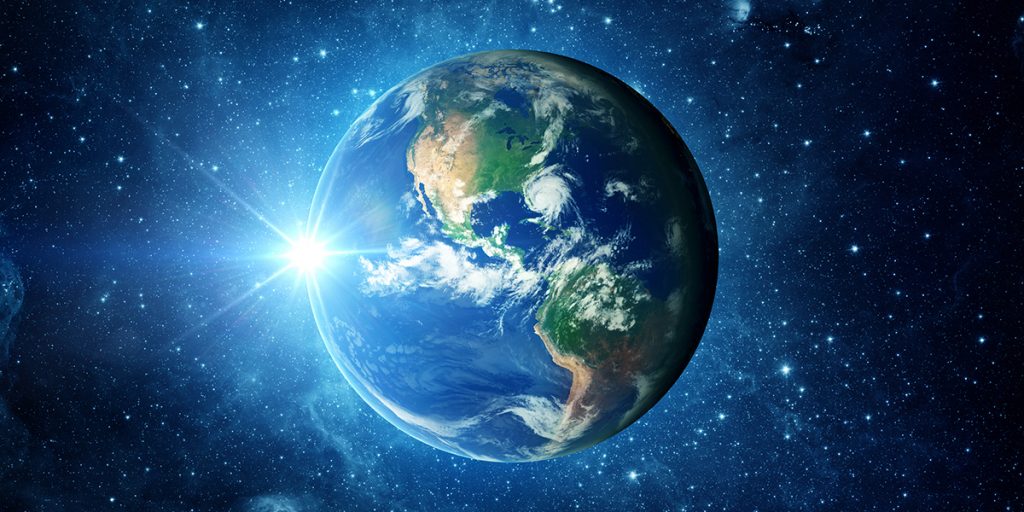
The opening decades of the 21st century may well become known as the time astronomers bade farewell to one beloved planet and said hello to thousands of others.
Pluto lost its place at the grownups table in our solar system back in 2006.
Even though “the little planet that could” was cherished by myriads of amateur sky-watchers – especially children – astronomers couldn’t overlook the fact that powerful new telescopes have now located dozens of other objects orbiting our sun that are as large as Pluto. One of them, named Eros, is 27% larger. Instead of designating all of these asteroids-on-steroids as planets, the global astronomical community created a new category, dwarf planet, to which it assigned the only object in the night sky that shares a name with a Disney cartoon character.
But even while our solar system has declined from nine planets to eight, the number of known “exoplanets” – bodies that we can see orbiting faraway stars – has grown rapidly. The first was discovered in 1995. Since then astronomers have identified at least 4,000 others.
Some of these worlds defy comprehension.
A Jupiter-sized planet called 51-Peg-b races around its star in just four days. By contrast, it takes 10 years for “the real Jupiter” to orbit the sun. On the planet Hat-P-7b, which is wreathed in clouds of aluminum compounds, it rains sapphires and rubies.
Some carbon-rich planets are under extreme pressure and are thought to be made of diamonds. There are lava planets, pink planets, and planets with the density of cotton candy. One extraordinary world features a deadly rain of molten glass falling at immense speed. The giant planet Wasp-76b, discovered in May 2020, has yellow skies and rains iron.
Of course, we don’t have to travel very far to find strange and inhospitable domains. Saturn is not really solid. If you took a scoop of Saturn and put it into a bathtub full of water, it would float. And the surface of Venus, which is saturated by a never-ending rain of hydrochloric acid, is a toasty 800 degrees Fahrenheit. Most of the probes we have sent there have ceased functioning within a few minutes.
What do all of these planets have in common?
None of them is even remotely like the Earth.
Three decades ago, the astronomer Carl Sagan suggested there were two important criteria for a planet to support life. Such a planet needed to be near “the right kind of star” (like our sun), and had to be “the right distance” from that star. His colleagues promptly punched their calculators and came up with the number of planets in our universe that might fit those two criteria. It was a very big number: one septillion (that’s 1 followed by 21 zeroes). How could there not be countless life-supporting worlds?
But it turns out that the variables for a Goldilocks Planet – one that is “just right” for life – is considerably more complex than anyone imagined. As the number of crucial parameters has gone from two to 10 to 50, the number of planetary candidates has plummeted accordingly.
As astronomy enthusiast Peter Schenkel admitted a few years ago: “In light of new findings and insights, it seems appropriate to put excessive euphoria to rest… We should quietly admit that the early estimates…may no longer be tenable.”
That’s putting it gently.
Author Eric Metaxas points out: “Today there are more than 200 known parameters necessary for a planet to support life – every single one of which must be perfectly met, or the whole thing falls apart… The odds against life in the universe are simply astonishing.”
Then he asks a question that most scientific materialists find uncomfortable: “Doesn’t assuming that an intelligence created these perfect conditions require far less faith than believing that a life-sustaining Earth just happened to beat the inconceivable odds to come into being?”
Fine-tuning conundrums, including those that concern the four fundamental forces of physics – gravity, electromagnetism, and the strong and weak nuclear forces – continue to raise eyebrows.
Metaxas reports that “if the ratio between the nuclear strong force and the electromagnetic force had been off by the tiniest fraction – by even one part in 100,000,000,000,000,000 – then no stars could have ever formed at all.”
Sir Fred Hoyle, who coined the term “Big Bang,” admitted that his atheism was “greatly shaken” by such discoveries. He wrote that “a common-sense interpretation of the facts suggests that a super-intellect has monkeyed with the physics, as well as with chemistry and biology… The numbers one calculates from the facts seem to me so overwhelming as to put this conclusion almost beyond question.”
The Bible puts it a little more poetically: “The earth is the Lord’s, and everything in it, the world, and all who live in it” (Psalm 24:1).
We’re used to seeing Luke Skywalker and Han Solo hop from one habitable world to another without so much as checking the air temperature. But that’s just Hollywood.
In reality, it appears to be exceedingly hard to find a Goldilocks Planet.
Against all odds, it may just be that we’re blessed to live on the only one.
